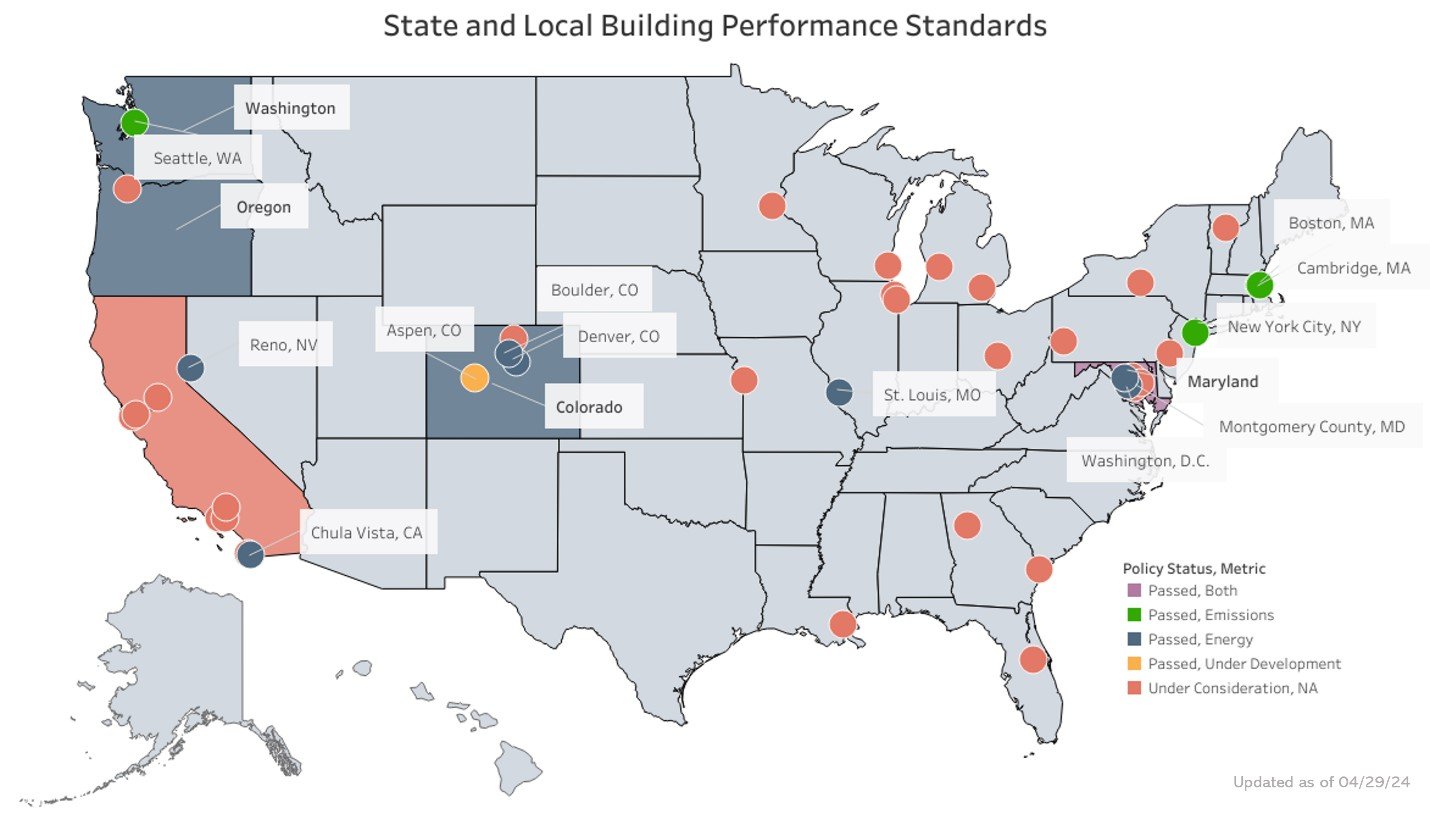Chart of the Week: State and Local Building Performance Standards

Source: U.S. Department of Energy; https://www.energycodes.gov/BPS
New York City has Local Law 97. Washington D.C. has its Building Energy Performance Standards (BEPS). Seattle has its Building Emissions Performance Standards (also BEPS). Denver has its Building Performance Policy (BPP).
Efforts to reduce carbon emissions related to commercial real estate have gone local, with the Biden Administration establishing a National Building Performance Standards (BPS) Coalition to help promote and facilitate state and municipal action.
What is a building performance standard? According to the Department of Energy, “Building Performance Standards (BPS) are outcome-based policies and laws aimed at reducing the carbon impact of the built environment by requiring existing buildings to meet energy and/or greenhouse gas emissions-based performance targets.”
In the case of New York City’s Local Law 97, “most buildings over 25,000 square feet are required to meet new energy efficiency and greenhouse gas emissions limits as of 2024, with stricter limits coming into effect in 2030.” To prompt action, buildings that don’t meet the standards will face fines, with the Real Estate Board of New York estimating that by 2030, fines associated with the law could exceed $900 million each year. At a 6 percent cap rate, that equates to a $15 billion impact on property values.
Each state and local law is unique, creating a patchwork of requirements for property owners, lenders, and others to navigate. One thing the laws have in common is that making the system changes necessary to meet BPS standards will require investment – affecting property capital needs and cash flows in coming years.
MBA is hard at work on real-estate-related climate/sustainability issues on three fronts – research, policy, and practice – including hosting a MBA CREF Climate/Sustainability Lenders Roundtable in October. We anticipate this issue will be getting hotter in the years ahead.
